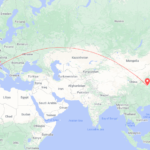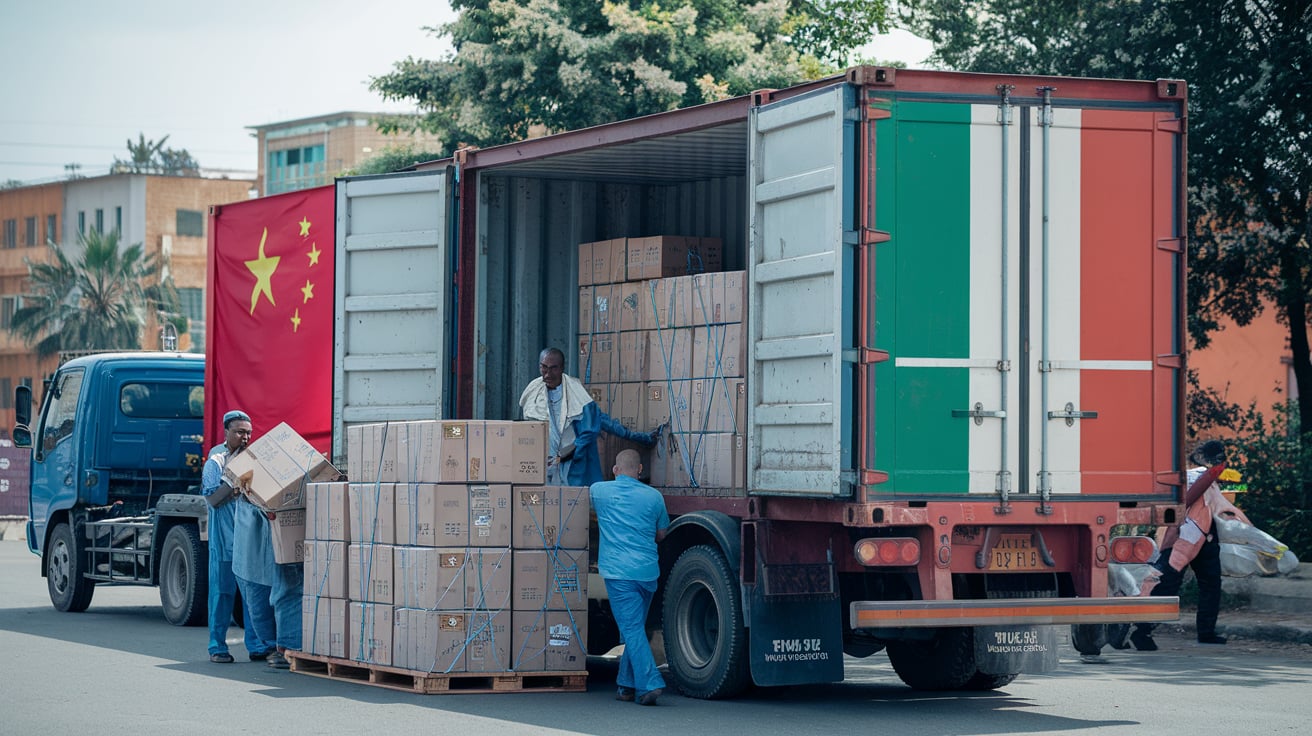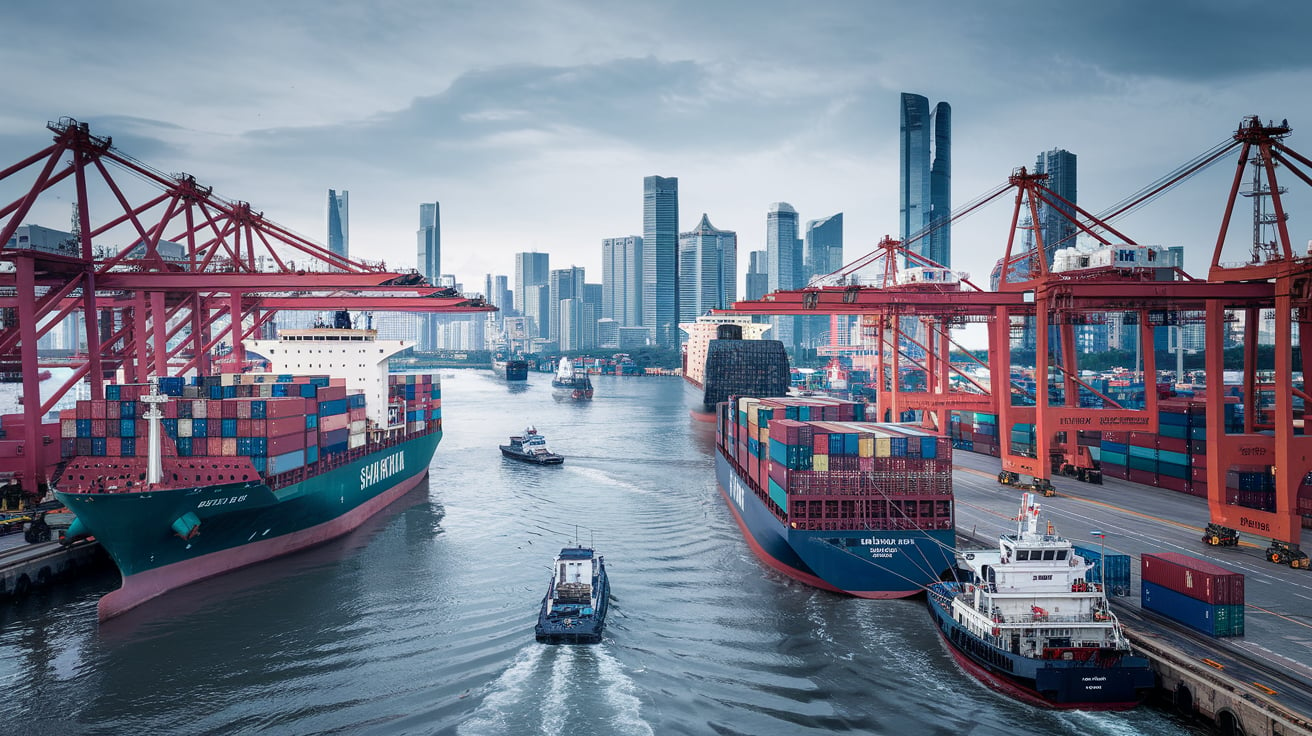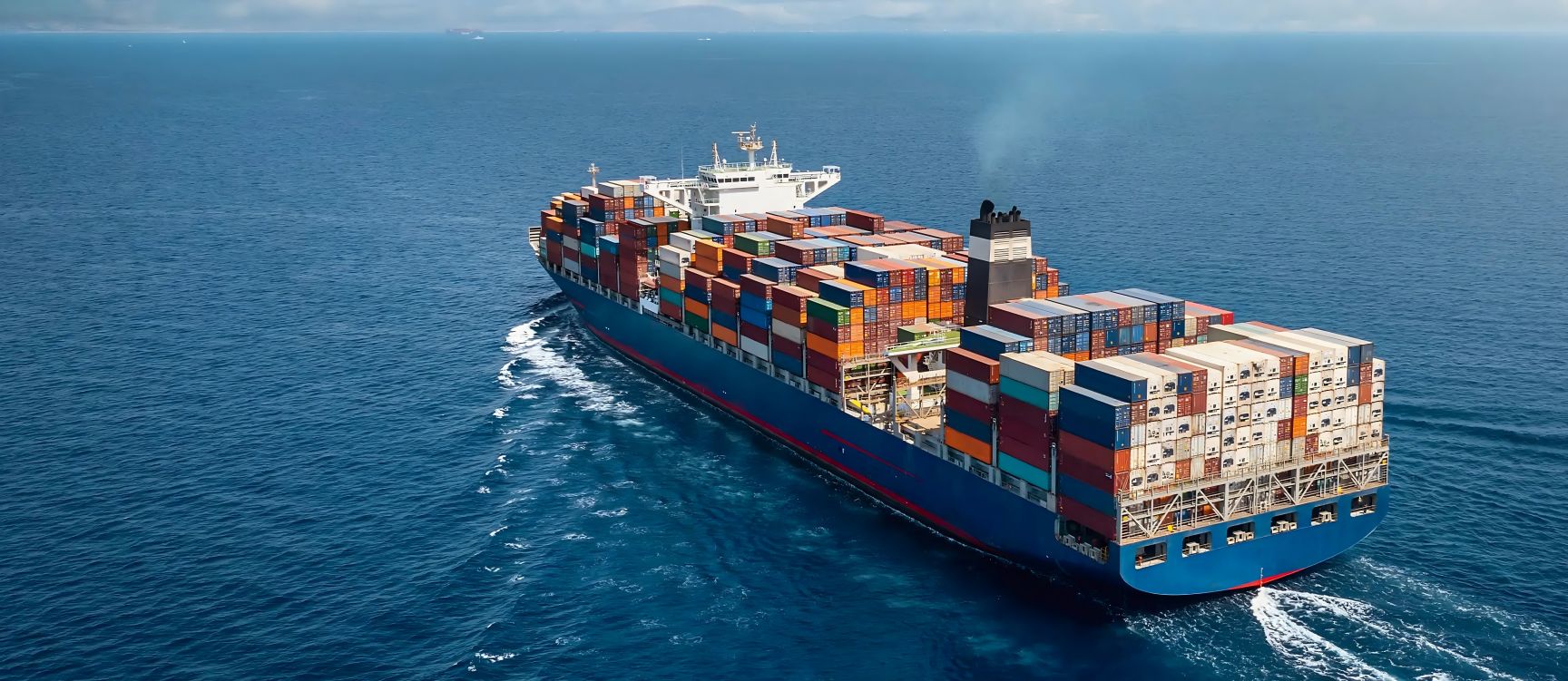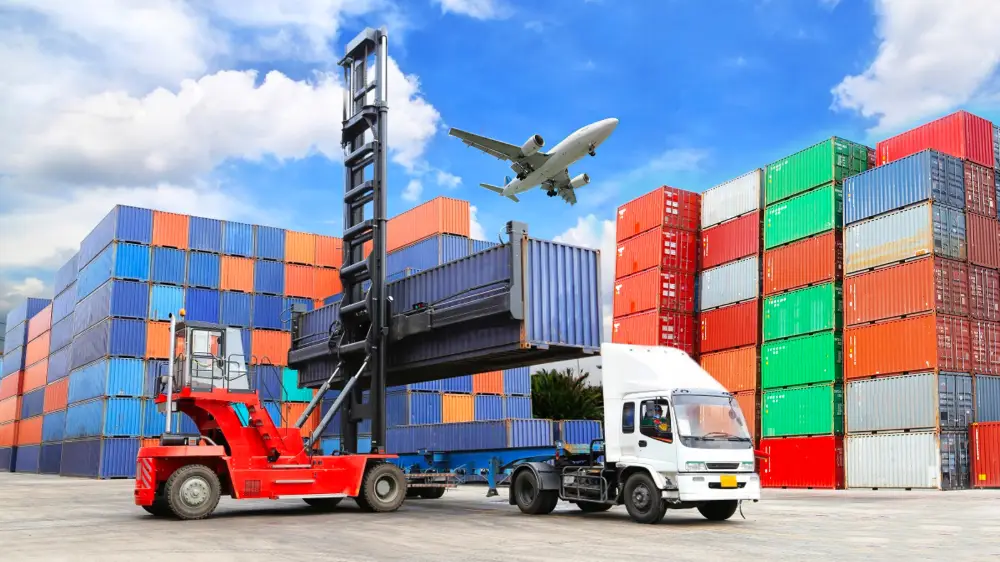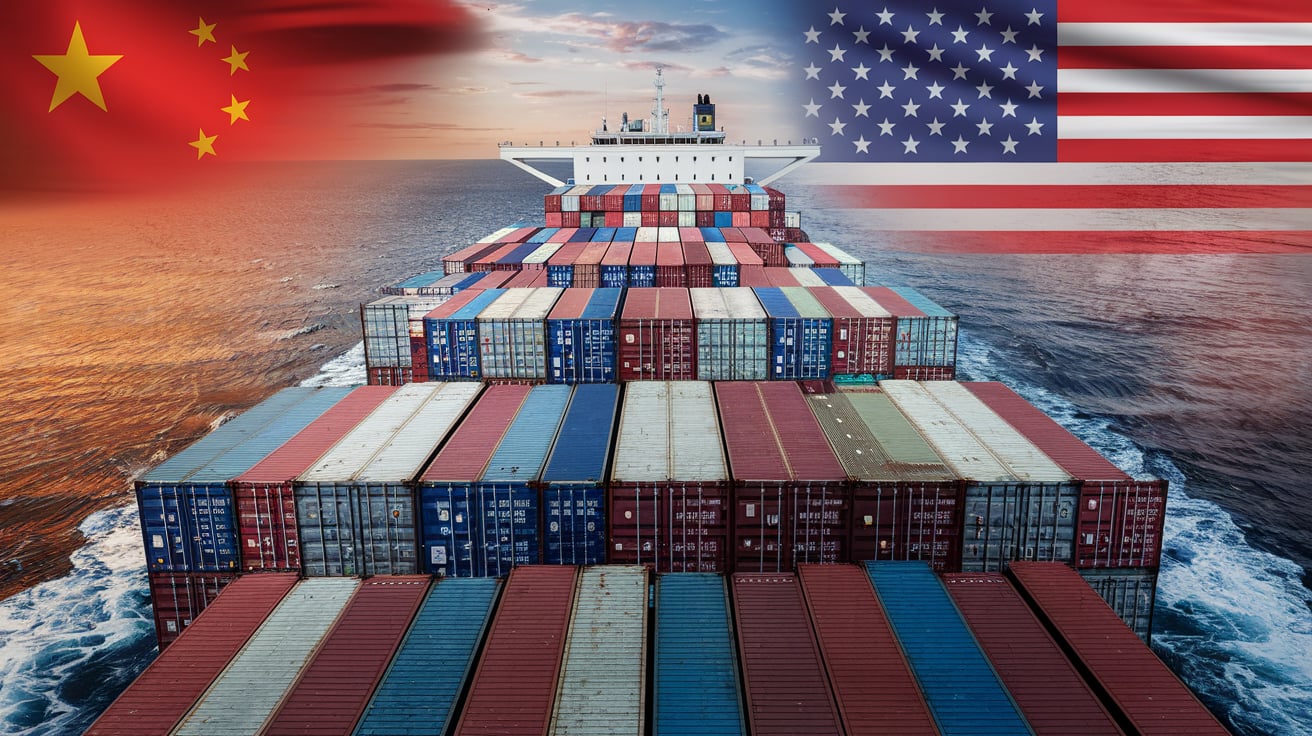Importing goods from China to Italy can be a cost-effective strategy for businesses looking to enhance their product offerings. However, navigating the complexities of international logistics requires careful planning and understanding of shipping methods, freight forwarder selection, and associated costs. This guide aims to equip importers with essential insights on choosing the right shipping method, optimizing packaging, and leveraging freight forwarder expertise to save money and streamline the import process. By making informed decisions, businesses can not only minimize expenses but also ensure timely and efficient delivery of their goods to the Italian market.
Related Article: Shipping From China to Italy

Choose the Right Shipping Method
Selecting the appropriate shipping method significantly impacts costs, delivery times, and overall efficiency in the import process. The two primary methods are ocean freight and air freight, each offering unique advantages based on the nature of the goods being shipped.
Ocean Freight vs. Air Freight
| Criteria | Ocean Freight | Air Freight |
|---|---|---|
| Cost | More cost-effective for large volumes | Generally more expensive |
| Speed | Slower (typically 20-40 days) | Faster (typically 1-7 days) |
| Capacity | High capacity for bulky goods | Limited capacity for weight |
| Fuel Efficiency | More fuel-efficient, lower emissions | Less fuel-efficient, higher emissions |
| Best for | Large, heavy items, non-urgent shipments | Urgent, high-value, or perishable goods |
Understanding the differences allows importers to make informed decisions based on their specific needs. Ocean freight is often favored for larger shipments, while air freight is suitable for smaller, urgent deliveries.
FCL vs. LCL
When opting for ocean freight, shippers must decide between Full Container Load (FCL) and Less than Container Load (LCL).
| Criteria | FCL (Full Container Load) | LCL (Less than Container Load) |
|---|---|---|
| Volume Requirement | Requires enough goods to fill a container | Can ship smaller quantities |
| Cost Efficiency | Typically lower per unit cost | Higher per unit cost |
| Transit Time | Faster as it does not share space | Slower due to consolidation |
| Risk of Damage | Lower risk of damage | Higher risk due to multiple handling |
Choosing between FCL and LCL depends on your shipment size and budget considerations. FCL is ideal for larger shipments, while LCL provides flexibility for those with smaller loads.
Factors to Consider
When deciding on a shipping method, consider the following:
- Budget: Evaluate your budget constraints and shipping costs.
- Timeline: Assess how urgently you need your goods.
- Nature of Goods: Consider the type of products (perishable, fragile, bulky).
- Frequency of Shipments: Determine whether this is a one-time shipment or part of a regular import cycle.
Find a Reliable Local Freight Forwarder in China
A competent freight forwarder plays an essential role in the import process, facilitating smooth shipping and customs clearance.
Benefits of Using a Chinese Freight Forwarder
- Local Expertise: Knowledge of local regulations, customs procedures, and shipping logistics.
- Cost-Effectiveness: Ability to negotiate better rates due to established relationships with carriers.
- Language Barrier: Overcoming language issues with local suppliers and authorities.
- Comprehensive Services: Many freight forwarders offer customs clearance, warehouse services, and insurance services, ensuring a streamlined process.
What to Look for in a Freight Forwarder
When selecting a freight forwarder, consider the following attributes:
- Experience: Look for a forwarder with a proven track record in shipping to your target market.
- Certifications: Ensure they have relevant certifications (e.g., NVOCC, IATA).
- Network: A strong network of contacts in shipping lines, customs, and warehousing facilities is essential.
- Customer Reviews: Research their reputation through reviews and testimonials from previous clients.
- Communication: Effective communication is crucial for resolving issues and staying informed throughout the shipping process.
Negotiating the Best Rates
Negotiating competitive rates is essential to maximizing your profit margins. Here are some strategies:
- Understand Pricing Structures: Familiarize yourself with the different components of freight charges (e.g., shipping, customs, landing fees).
- Leverage Volume: If you’re a frequent shipper, leverage your shipping volume to secure lower rates.
- Request Multiple Quotes: Obtain quotes from different freight forwarders to compare rates and services.
- Build Relationships: Cultivate a strong relationship with your forwarder, which can lead to more favorable terms over time.
By choosing the right shipping method and collaborating with a reliable freight forwarder, you can simplify your import process from China. For comprehensive logistics support, consider partnering with Dantful International Logistics. We offer a highly professional, cost-effective, and high-quality one-stop international logistics service tailored for global traders.
You may be interested in the following related articles:
- Shipping From China To Sweden
- Shipping From China To Belgium
- Shipping from China to Russia
- Shipping From China to United Kingdom
- Shipping From China To Netherlands
- Shipping From China To Spain
- Shipping From China To Germany
- Shipping From China To France
Optimize Your Packaging and Utilization
Effective packaging not only protects goods but also leverages space to reduce shipping costs.
Proper Packaging to Minimize Damage
To prevent damage during transport, it’s crucial to employ the right packaging techniques. Here are key considerations:
- Choosing the Right Materials: Use high-quality, durable materials tailored to the nature of the products. For example, fragile items require bubble wrap, foam, or padded envelopes for extra protection.
- Layering Techniques: Implement layering methods for fragile items. Place cushioning materials between items to absorb shocks and prevent movement during transit.
- Sealing and Labeling: Ensure boxes are securely sealed with strong packing tape. Clearly label each package with handling instructions, such as “Fragile” or “This Side Up,” to guide carriers during handling.
- Using Pallets: For bulk items, utilize pallets to facilitate easier loading and unloading, reducing the risk of damage during movement.
Implementing these practices will significantly lower the risk of damage, leading to higher customer satisfaction and reduced costs associated with damaged goods.
Maximizing Container Space
Efficient use of container space is a critical factor in minimizing shipping costs. Consider the following strategies:
- Custom Packaging Solutions: Utilize custom-sized boxes that fit your products closely, minimizing void space. Tailored packaging reduces wasted space and enhances stability during transport.
- Vertical Stacking: Stack items vertically whenever possible to optimize space. Ensure that the heavier items are at the bottom and lighter ones on top to maintain balance.
- Load Distribution: Balance the load evenly across the container to avoid shifting, which can cause damage and inefficiencies during transport.
- Flat Packing: Where applicable, consider flat packing items. This method reduces the overall volume of shipments, allowing for more cargo in each container.
By maximizing container space, importers can lower shipping frequency and reduce overall costs.
Calculating Dimensional Weight
Understanding and calculating dimensional weight is essential for accurate shipping costs. Dimensional (DIM) weight reflects the space a package occupies in relation to its actual weight. Here’s how to calculate it:
- Measure the Package Dimensions: Measure the length, width, and height of the package in inches.
- Calculate Volume: Multiply the dimensions to get the volume in cubic inches.
- Use the DIM Factor: Most carriers use a DIM factor (typically 166 for domestic shipping in the U.S. or 139 for international). Divide the volume by the DIM factor to determine dimensional weight in pounds.
The higher value between the actual weight and DIM weight is what carriers typically charge for shipping. Understanding this concept allows for better packaging decisions that can optimize costs.
Plan Ahead for Shipments
Effective shipment planning is paramount for a smooth import process. Proper planning helps avoid delays and unexpected costs.
Booking Containers in Advance
Securing your shipping containers well in advance is crucial for maintaining schedules and budgets. Here are some beneficial practices:
- Early Reservations: Book containers as early as possible to ensure availability. This is particularly important during high-demand periods.
- Regular Communication: Maintain regular contact with your freight forwarder to stay updated on availability and potential shipping delays.
- Flexible Schedules: If possible, remain flexible with your shipping dates to accommodate any last-minute changes or availability issues.
By booking containers in advance, importers can reduce the risk of delays and ensure their goods reach their destination on time.
Avoiding Peak Season Surcharges
Shipping costs can significantly increase during peak seasons due to heightened demand. Here’s how to navigate this challenge:
- Research Peak Times: Familiarize yourself with peak shipping seasons relevant to your goods. For example, the holiday season often sees increased shipping costs.
- Plan Shipments Off-Peak: Whenever feasible, schedule shipments during off-peak times to avoid surcharges and take advantage of lower rates.
- Build Inventory: Maintain adequate inventory to buffer against peak season demands, allowing for more flexibility in shipment timing.
Avoiding peak season surcharges can lead to considerable savings and smoother logistics operations.
Staggering Shipments
Staggering shipments can enhance overall efficiency and cost-effectiveness. Consider the following:
- Split Shipments: If importing large quantities, consider splitting shipments over several weeks or months. This approach can help manage costs and avoid overwhelming your logistics capabilities.
- Incremental Delivery: Implement incremental delivery schedules that align with inventory needs. This allows you to meet customer demand without overstocking.
- Monitor Inventory Levels: Use inventory management systems to track stock levels and adjust shipment frequencies accordingly.
Staggering shipments not only smooths out operational workflows but also helps manage cash flow effectively.
By optimizing packaging and planning shipments strategically, importers can significantly improve their logistics processes when sourcing goods from China. For tailored logistics solutions and efficient handling of your shipments, consider partnering with Dantful International Logistics. Our expertise in door-to-door shipping services ensures a seamless import experience with cost-effective solutions.
Leverage Your Freight Forwarder’s Expertise
Engaging a knowledgeable freight forwarder can significantly enhance your import operations. Their insights and services can streamline the process, mitigate risks, and ensure compliance with regulations.
Customs Clearance Assistance
Customs clearance is a critical step in the import process, and having a freight forwarder with expertise in this area can simplify the journey. Here are key aspects of their role:
- Documentation Preparation: Freight forwarders assist in preparing and submitting the necessary paperwork, such as invoices, packing lists, and certificates of origin. This ensures compliance with customs regulations and avoids delays.
- Tariff Classification: They can help classify goods accurately under the correct tariff codes, which is vital for determining applicable duties and taxes. Incorrect classification can lead to fines and shipment delays.
- Liaison with Authorities: Freight forwarders act as intermediaries between importers and customs authorities, facilitating communication and negotiation of issues that may arise during the clearance process.
- Understanding Regulations: They stay updated on evolving customs regulations and trade agreements that affect the import process, offering guidance to navigate any changes.
Utilizing the customs clearance expertise of your freight forwarder minimizes risks and accelerates the delivery of your goods.
Tracking and Monitoring
A reliable freight forwarder provides robust tracking and monitoring services, enhancing transparency and control over your shipments. This includes:
- Real-Time Updates: Most freight forwarders offer real-time tracking systems, allowing you to monitor the status and location of your shipment at every stage of the journey. This capability provides peace of mind and facilitates proactive decision-making.
- Alerts and Notifications: Receive notifications for critical events, such as departure, arrival, and customs clearance, ensuring you’re always informed about your shipment’s progress.
- Issue Resolution: In the event of unexpected delays or issues, knowledgeable freight forwarders can quickly address problems, ensuring that resolutions are implemented efficiently.
These tracking and monitoring services enable importers to maintain visibility and effectively manage logistics.
Customized Solutions
Every business has unique shipping needs, and a proficient freight forwarder can tailor their services to meet your specific requirements. Considerations include:
- Flexible Shipping Options: They can provide a range of shipping methods (air, ocean, etc.) and schedules to align with your operational needs and budget.
- Specialized Handling: For sensitive or high-value items, freight forwarders can offer specialized handling solutions, such as climate-controlled transport or enhanced security measures.
- Consolidation Services: If you frequently import smaller shipments, your forwarder can consolidate these into one larger shipment to reduce costs.
Customized solutions enable businesses to optimize their logistics strategies, resulting in more efficient and cost-effective operations.
Understand Import Taxes and Duties in Italy
When importing goods into Italy, understanding the financial implications of import taxes and duties is vital for effective budgeting and compliance.
- Customs Duties: These are tariffs levied on imported goods based on their customs classification. The rates can vary significantly depending on the type of product. Importers should be aware of the relevant customs codes for their goods and consult the EU’s TARIC (Tarif Intégré de la Communauté) system for specific duty rates.
- Value Added Tax (VAT): In Italy, VAT applies to most goods at a standard rate of 22%. Importers must pay VAT on the total value of the goods, including shipping and insurance costs. It is important to register for VAT to reclaim it if your business is VAT-registered in Italy.
- Excise Duties: Specific categories of goods, such as alcohol and tobacco, may be subject to additional excise duties. These duties are also based on the type and quantity of the goods imported.
Calculation of Import Taxes and Duties
To calculate the total import duties and taxes, follow these steps:
- Determine the Customs Value: This includes the cost of goods, shipping, and insurance.
- Apply the Customs Duty Rate: Multiply the customs value by the applicable customs duty rate to calculate the duty owed.
- Calculate VAT: Apply the VAT rate to the total of the customs value plus customs duty to determine the VAT owed.
A sample calculation for clarity:
| Description | Amount |
|---|---|
| Cost of Goods | €10,000 |
| Shipping Cost | €1,000 |
| Insurance | €200 |
| Customs Value | €11,200 (10,000 + 1,000 + 200) |
| Customs Duty Rate | 5% |
| Customs Duty | €560 (5% of 11,200) |
| VAT Rate | 22% |
| VAT | €2,464 (22% of (11,200 + 560)) |
The total amount payable upon import, including customs duties and VAT, would be €3,024.
Understanding these financial aspects will help importers budget effectively and avoid unexpected costs during the importation process.
For tailored logistics solutions, including assistance with customs clearance, tracking, and comprehensive understanding of import regulations, consider partnering with Dantful International Logistics. Their expertise in door-to-door shipping services ensures a seamless and efficient import experience, enabling you to focus on growing your business.
Explore Cost-Saving Opportunities
Identifying and leveraging cost-saving opportunities can significantly enhance your bottom line and improve the efficiency of your import operations.
Off-Peak Season Discounts
Shipping during off-peak seasons can lead to substantial savings. Carriers often lower their rates when demand is lower, making it an advantageous time for importers to schedule shipments. Here are key considerations:
- Identify Off-Peak Seasons: Research the shipping industry to identify periods when demand typically decreases. For instance, after the holiday season or during the summer months, carriers may offer reduced rates.
- Flexible Scheduling: If possible, adjust your shipping schedules to align with off-peak times. This flexibility can help you take advantage of lower rates and better availability of shipping containers.
- Negotiate Rates: Discuss with your freight forwarder about potential off-peak discounts or promotions offered by carriers. They may have insights into when pricing is more favorable due to lower demand.
Bulk Shipping Rates
Shipping larger quantities at once can yield significant cost reductions. This approach is especially beneficial for businesses with consistent inventory needs. Consider these strategies:
- Volume Discounts: Many freight carriers offer discounted rates for bulk shipments. Evaluate your shipping patterns and consider consolidating multiple orders into a single shipment to qualify for these discounts.
- Long-Term Contracts: If you anticipate regular shipments, negotiating long-term contracts with carriers can lock in favorable rates and facilitate budget planning.
- Utilize Full Container Loads (FCL): Whenever possible, opt for FCL shipping to maximize container space and reduce per-unit shipping costs compared to Less than Container Load (LCL) shipments.
Consolidation Services
Consolidation services involve combining multiple shipments into one to optimize shipping costs and efficiency. Here’s how to make the most of this service:
- Aggregation of Orders: Work with your freight forwarder to combine orders from various suppliers into a single shipment. This approach reduces shipping frequency and leverages economies of scale.
- Shared Containers: If you are unable to fill a container on your own, consider sharing a container with another importer. This method allows you to split costs while still ensuring timely delivery.
- Custom Solutions: Discuss customized consolidation options with your freight forwarder that align with your specific shipping needs, thus enhancing both efficiency and cost-effectiveness.
Maintain a Strong Relationship with Your Freight Forwarder
A healthy and collaborative relationship with your freight forwarder is crucial for smooth logistics operations. Open lines of communication and trust contribute significantly to achieving mutual goals.
Open Communication
Effective communication is paramount for successful collaboration. Here are ways to enhance communication with your freight forwarder:
- Regular Check-Ins: Schedule periodic meetings or calls to discuss ongoing shipments, potential challenges, and updates on industry trends. This proactive approach keeps both parties informed and aligned.
- Transparency: Be open about your needs, expectations, and any potential issues. Transparency fosters trust and allows the freight forwarder to provide tailored solutions.
- Utilize Technology: Leverage tools like freight management software or online tracking systems to facilitate real-time updates and enhance communication transparency.
Providing Accurate Information
The accuracy of information exchanged is critical to avoiding delays and complications. Focus on the following aspects:
- Complete Documentation: Ensure that all shipping documents (invoices, packing lists, and certificates) are complete and accurate. Providing precise details allows your freight forwarder to handle customs clearance and logistics more efficiently.
- Clear Product Descriptions: Provide thorough descriptions of the goods being shipped, including weights, dimensions, and values. This information is essential for proper classification and tariff determination.
- Forecasting Needs: Share your shipping forecasts and schedules with your forwarder. This enables them to plan resources effectively, ensuring timely and efficient deliveries.
Giving Feedback and Suggestions
Constructive feedback contributes to continuous improvement in service quality. Consider these approaches for providing feedback:
- Evaluate Performance: After each shipment, assess the performance of your freight forwarder in terms of timeliness, accuracy, and service quality. Share your insights, whether positive or negative, to help them understand your perspective.
- Discuss Improvement Areas: If you encounter any challenges or have suggestions for improvement, communicate these to your freight forwarder. Their ability to adapt to your feedback can enhance efficiency and service quality.
- Acknowledge Good Service: Recognizing and appreciating great service fosters goodwill and encourages your freight forwarder to maintain high service standards.
By exploring cost-saving opportunities and fostering strong relationships with your freight forwarder, importers can enhance their logistics processes and improve overall business efficiency. For a seamless import experience, consider leveraging the expertise of Dantful International Logistics. Our comprehensive services, including door-to-door shipping solutions, ensure a smooth and cost-effective logistics operation tailored to your specific needs.
Dantful International Logistics Services:
- Dantful Ocean Freight Services
- Air Freight From China
- Amazon FBA Freight Forwarding
- WAREHOUSE Services
- One-Stop Customs Clearance Solution
- Cargo Insurance Services in China
- DDP Shipping Services By Dantful Logistics
- Out of Gauge Cargo Transportation Shipping Services

Young Chiu is a seasoned logistics expert with over 15 years of experience in international freight forwarding and supply chain management. As CEO of Dantful International Logistics, Young is dedicated to providing valuable insights and practical advice to businesses navigating the complexities of global shipping.

